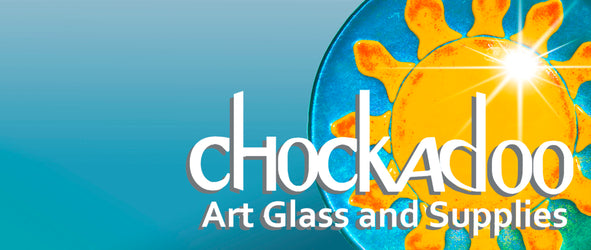
Egyptian Blue Opaque Bullseye Sheet 164 3MM
- Description
- Working Notes
-
Sold as a Handy Sheet, which is approximately 280 x 250 x 3mm*
Compatible with COE090.
*The dimensions may vary slightly depending on the sheet -
Contains
Copper
May React With
Selenium, Sulphur, Reactive (000009, 001009, 001019)
See our Bullseye Reactive Potential charts for more information
Cold Characteristics
Partly transparent.
Working Notes
Opalises upon firing. It may contain thin threads of colour variation.
At tack fusing and slumping temperatures, the surface may develop a metallic grey film. This effect is inconsistent and usually disappears at full fuse temperatures. To localize the effect, which only occurs where Egyptian Blue is exposed, cap or layer with clear. Consider testing for each specific application. To achieve this effect more consistently, consider using Steel Blue Opalescent (000146). Learn more by reading: Special Effects: Steel Blue Opalescent.
At a full fuse, Egyptian Blue Opalescent has the potential to deposit trace amounts of copper on the surface of the kiln shelf. These deposits may react with sulfur-bearing glasses in subsequent firings. Processes that require greater heat work, such as pattern or flow bar techniques, can also lead to copper deposits. Such deposits may not be visible and can react even when the shelf has been properly scraped and reprimed or when ThinFire has been removed and a new ThinFire is applied. This type of contamination is impermanent and may be burned out/fired out throughout subsequent firings. A contaminated shelf can be fired with glasses—other than sulphur-bearing glasses—and no reaction will take place. In our studios, we've observed the greatest contamination in subsequent firings with sulphur-bearing French Vanilla Opalescent (000137) and Spring Green Opalescent (000126). For a burnout firing, we recommend a rate of 300°F/hr to 1525, with a hold of 1:00.
Note About Glass Cleaner
The exposed surface of 000164 has greater sensitivity to glass cleaner. Traces of this liquid, which often fire cleanly, may be visible in fired works as a metallic sheen. The metallic sheen is prone to develop at tack fusing and slumping temperatures as described above. To prevent it, be sure to buff the glass with a towel to completely remove the glass cleaner before firing.


